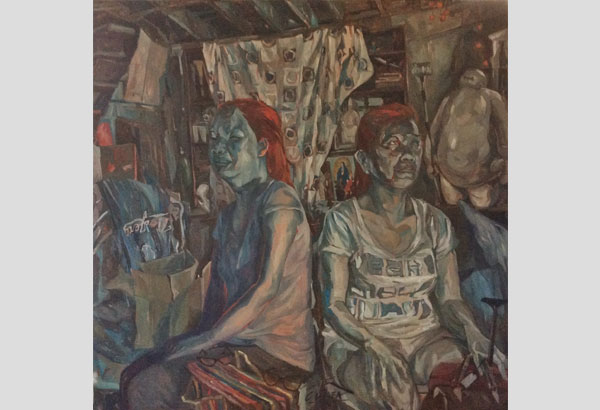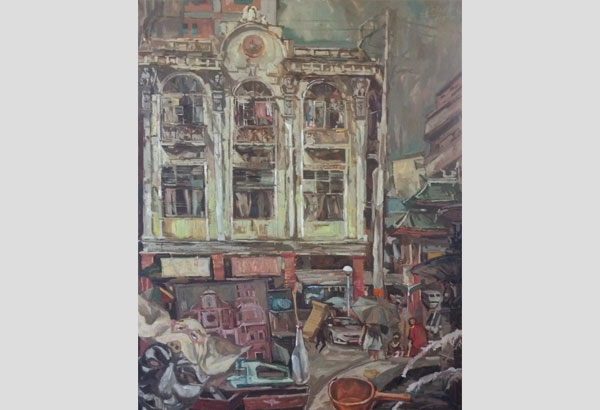As good as news

Social Realism, the artistic movement that dominated the country from the 1960s to the 1980s, didn’t go the same way as the dictatorial government it sought to topple. Some of the pioneer SR artists, such as Pablo Baen Santos and Antipas Delotavo, are still active in the scene, creating work that focuses on politically rife subjects such as social justice, migration and environmental degradation. A new breed of artists is following in their wake, such as Kiri Dalena whose video and photography work, among others, explore the erosions and erasures of history.
Another such artist who has consistently subscribed to the edict of Social Realism is Melvin Culaba whose 21st solo show, “Marker,” is on view at the Pasilyo Vicente Manansala of CCP Main Theater until Aug. 16. This exhibition, which is organized by Art Cube, juxtaposes private interest and civic aspiration, urban poor and the hostile city, and impersonal architecture and human hope in a series of large-scale works that have the freshness and the sharpness of a news report.
His paintings are dispatches from the center of the maelstrom — a stunning reportage that transfigures what we encounter in the news into permanent reminders of the political and social forces that set borders, demarcate places and desecrate landmarks to constrain the movement of bodies, dulling their potential and incarcerating them in wall-less prisons characterized by urban blight and degradation.

The poor and the dispossessed continue to be Culaba’s abiding subjects such as in the work, “Mabuhey…Babalik ka Rin.”
In a sense, Culaba shares his power of illustration with that of an editorial cartoonist with his combinations of imagery and commentary focused on contemporary issues. And yet his works, while reportorial, are not entirely journalistic, for his forms — charged with explosive content — accrue into visual allegories of seemingly permanent scenarios that will continue to go on unless something about the status quo and the distribution of power is disrupted.
For instance, in “Imbentong linya at EDSA Magkaisa Watever,” the red stitch on the canvas refers to the nine-dashed line set by China that delineates much of South China Sea (and in effect, breaching against our territorial waters) as its property. The other elements in the painting (a snapshot of the EDSA uprising, a modern-day aswang) seem to point out the impotence of belief in the face of China’s real militaristic force.
Culaba is part of the circle of talented artists who emerged from the University of Santo Tomas in the mid-‘90s; he was batchmates with Ronald Ventura and Andres Barrioquinto. Unlike them, however, he took the Realist strain, creating work that mirrored what for him were urgent concerns, such as poverty, marginalization and inequality.

“Makibaboy…Wag Matakot” reveals the wall-less prison which is the city, characterized by urban blight and degradation.
Through the years, his style has evolved to convey the immediacy of his themes, mainly composed of long sinewy strokes, which sculpt perspective, throw light and shadow on surfaces and register muscular energy. Culaba is not afraid to reveal the labor and the aspiration of the hand in its engaged and fierce declarations of the human condition, especially of the poor and the dispossessed who continue to be the artist’s abiding subjects.
With “Marker,” Culaba proves that he is a worthy heir to the now grand tradition of Social Realism, his works plumbing the spaces — literal and otherwise — that are ubiquitous and implicated in the lives of many Filipinos and yet are neglected, most noticeably in the realm of art, for their rebarbative qualities.
The artist is not afraid to look and report on the continued warping of the social fabric through various inequities (say, lack of quality education), using his talent of representation as transformative force. When we look at his works, what we see is less an imagined world than a magnified reality, bristling with signifiers of destitution and doom, but not without dignity and the capacious hope that it can be altered and marked with deliberate and active passage.



















